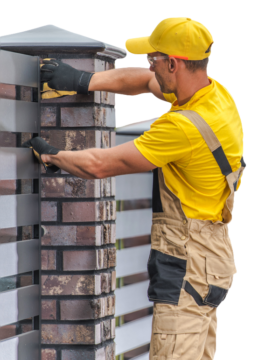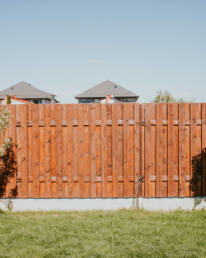A wood fence gives Denver homes great aesthetic appeal and provides a border that keeps kids and pets in a confined space on the property. Wood fences boost curb appeal and stand out in the community, but over time, wood fences rot away. As this happens, the wood fence loses appeal, may attract pests to your property, and no longer provides the confined space you want. The solution is simple: maintain your wood fence.
As fall approaches, we look forward to a break in the heat, walks around town through the colorful leaves falling from the trees, and of course, pumpkin-spice everything. We focus on getting everything ready for the change of season, like the heating system, the car, and equally important, ourselves! We all know how sudden and drastic the weather changes in Denver can be.
Wood fence maintenance so often gets pushed to the backburner or forgotten altogether, albeit accidental, by Denver homeowners focused on other fall maintenance tasks. Don’t neglect your fence this year. Fall wood fence maintenance is super quick and easy, and with it comes peace of mind from the knowledge that your fence will continue to benefit your property for years ahead.
Fun Fact: Cedar is one of the best wood fence species available. It’s long-lasting, durable, and elegant. Cedar is the preferred wood fence material used by Denco Fencing.
Wood Fence Fall Maintenance Tips
Knowing you’ve taken the right steps to protect your wood fence gives autumn an even more special ambiance. Best of all, taking care of your fence is pretty simple -and Denco Fencing is around to help with all your needs, from a fence repair to fence installation.
We’ll start with the following wood fence fall maintenance tips to get you going in the right direction. If you have additional questions or need fence service in Denver or the surrounding areas, we are one phone call or email away, always ready to cater to your fencing needs.
Install Pressure-Treated Posts
Install pressure-treated posts -which cost around $10 each- around the fence to prevent moisture rot and pest infestations and damage. The chemically treated posts are safe for pets, kids, and the environment, and can save the fence from considerable wear and damage as it ages.
Termites eat the cellulose out of wood. The pest can destroy your fence and create tunnels leading to your home where they continue their wood destruction, eating away at your house from the inside out. By using pressure-treated wood, this risk is one less worry on your mind.
Seal the Fence with a Wood Preservative
Wood preservative does the same thing for a fence that car wax does for a vehicle. Available at home improvement stores, wood preservatives protect wood against elements like sunshine and water, which considerably damage the fence.
Exterior stains are also sealants. Use a stain rather than a wood preservative if you want your fence to coordinate with the color of your home. Stains cost more than wood preservatives but offer additional benefits not offered by the former.
Sealant isn’t necessary if your fence uses pressure-treated wood posts. The chemicals injected into the posts already contain preservatives designed to protect the fence against rot.
Protect the Fence Against Water Damage and Weight
Water and wood are bitter enemies. Protect your wood fence against damage by ensuring it never comes in contact with water. Even tiny droplets of water from the sprinkler can cause the fence to rot faster, warp, and suffer other extensive damage.
Remove loose and low-hanging branches from above the fence. The added weight can damage the fence, plus the tree hangings can considerably damage the fence during one of Denver’s numerous hail or snow storms or strong wind surges.
Inspect the Fence for Damage
Every month or so, make it a habit to inspect your wood fence, looking for any signs of wood rot or other types of damage that affect the longevity, appearance, or safety of the structure.
Some types of fence damage can easily be repaired without Denver fence repair experts, like loose or missing nails. More complex issues, such as missing wood planks or wood rot, require professional intervention.
Clean the Fence
The easiest way you can protect your fence is by keeping it clean. Just remove leaves, dirt, and other debris that has compiled on and around the fence and reduce greatly the risk of mold and mildew damage, potentially the worst of damage a fence can experience.
After removing these items, a quick pressure wash will wipe away stains and dirt that have accumulated on the fence, bringing back its elegant style and beauty.
Fun Fact: Pine, beech, maple, and aspen are four of the worst wood species choices for fences. The species are susceptible to wood rot and other types of damage and generally have a lower life expectancy than other wood species.
The Bottom Line
A lack of care for a wood fence destroys it well before its time. Improper care gives the fence an unsightly appearance and may lead to damages, including wood rot and mold, and mildew. Protect your investment and expand the lifetime of your fence by implementing the fall maintenance tips above into your schedule.
Call the wood fence experts at Denco Fencing if you need fence repair, installation, or service in Denver, CO.

Need an expert opinion? Talk to our experts today!
When you talk to our experts at Denco Fence Company, we’ll help you compare fence styles, share design ideas, and answer any questions along the way. If you’re looking to build or repair a fence that you and your neighbors are going to love, get a free estimate and let us help bring your project to life.

